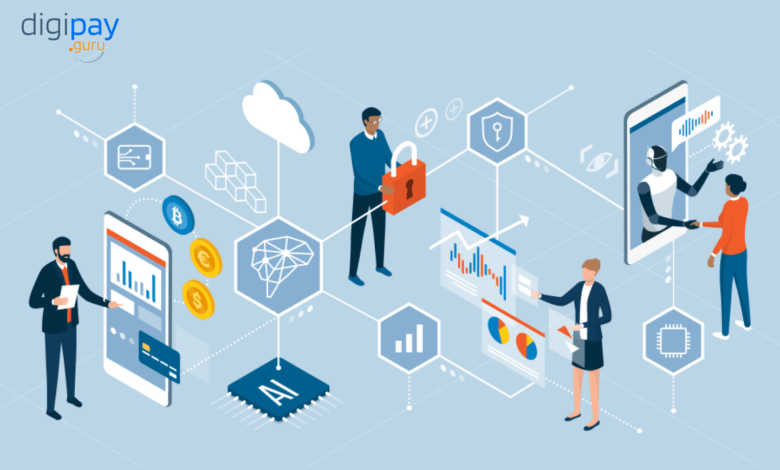The Future of Payment Infrastructure: The Role of Orchestration Platforms

As digital transformation increases, the payment infrastructure landscape is evolving rapidly. Firms competing in global markets need agile, scalable, and innovative transaction management solutions. Orchestration platforms will redefine how ecosystems work in payments because they will be orchestrated with cutting-edge additions like AI and cryptocurrency integration. The article discusses the role of payment orchestration platforms in enabling global trade, increasing customer conversion rates through localized solutions, and aligning with emerging trends in FinTech.
Evolution of Orchestration Platforms
Orchestration platforms act as centralized hubs that streamline payment processes, enabling businesses to integrate various payment methods, currencies, and compliance requirements efficiently. Unlike traditional systems, which often rely on disparate, fragmented payment gateways, an orchestration platform provides a unified interface for seamless transaction management.
Key Drivers of Change:
- AI: Orchestration platforms detect fraud, route it in a way that saves costs, and personalize user experiences by analyzing transactional data.
- Blockchain and crypto adoption brings faster cross-border payments, lower transaction costs, and better financial inclusion.
- E-commerce Globalization: The only expansion of online commerce needs a system for compliance requirements regionally and across payment methods.
AI and Cryptocurrency: Catalysts for Innovation
The role of AI in payments
AI integration will be achieved by changing the orchestration platforms that will change the payment systems. Automated fraud detection will lower the rate of false declines while securing transactions. However, as Forbes notes, human guardrails are essential to balance automation and make money movement reliable.
Machine learning also analyzes consumer behavior and trends, which anticipate the tendency of businesses to configure payment experiences constructively. Such capabilities enable platforms to dynamically adapt to user preferences in offering optimized solutions. Tranzzo, for instance, leverages AI to simplify payment routing and increase approval rates, making operations smoother for merchants and creating better customer experiences. This will reduce the disturbance in the online business ecosystem while enhancing efficiency and customer satisfaction.
- Cryptocurrency: a game-changer
Cryptocurrencies and blockchain technologies have long been thrust into the mainstream market rather than being played in the margins. They are becoming increasingly important within payment systems. There are positives from the elimination of intermediaries in between by cryptocurrencies:
- Faster settlement times.
- Lower fees for cross-border transactions.
- Enhanced transparency and security.
Integrating crypto solutions into orchestration platforms can help businesses meet the needs of tech-savvy consumers while reducing operational complexity because they can offer all those payments in one place. Tranzzo is an example of a flexible platform that provides payment options from cryptocurrencies to general monetary methods, keeping your business competitive in a digital-first economy.
Simplifying Global Market Operations
Globalization has been a great leap forward in the business world, but it has added new layers of complexity to payment management. Businesses operating across borders face challenges such as currency exchange rate regulations in different countries and different tastes and preferences of consumers in other countries.
How Orchestration Platforms Add Value:
- Streamlined Operations: Business firms reduce admin overheads by integrating several payment gateways into one interface.
- Dynamic Currency Conversion: Such platforms offer instant currency conversion, allowing international customers to see prices clearly.
- Regulatory Compliance: Automated solutions enable firms to comply with local regulations, reducing legal risks to a minimum.
However, firms that want to establish trust and loyalty with international customers need the capacity to adjust to regional subtleties. Orchestration platforms with rich features—such as those offered by Tranzzo—enable firms to meet these challenges effectively.
Localized Payment Solutions: The Conversion Booster
Localization is a significant strategy that improves customer conversion rates. Customers’ likelihood of completing a transaction increases when they can use their familiar payment methods and interact with systems in their language and with their currency. For example, Alipay and WeChat Pay rule China; SEPA and iDEAL are preferred throughout Europe; Boleto and Pix are the rising stars in Latin America.
Localized solutions give these preferences regional payment options that ensure trust and lower cart abandonment rates. Apart from these, setting language and currency makes the user experience smooth and simple. Cultural relevance comes into play, too: customized payment solutions fit better with the habits and expectations of local consumers. Companies that focus on l10n not only increase customer happiness but also boost loyalty and revenue growth. Services like Tranzzo, which focuses on offering different and localized payment methods, empower companies to navigate these regional complexities effectively and efficiently.
Future Trends in Payment Infrastructure
The payment landscape is fast changing, with tech innovations and shifts in consumer habits driving it. Significant trends to note are:
1. Rising Use of Biometric Security
Biometric technologies like fingerprints and face ID are adding layers of safety to digital payments. Their integration with orchestration platforms ensures that transactions are safe and smooth.
2. Expansion of Embedded Finance
Embedded finance allows non-financial enterprises to offer financial services directly inside their ecosystems—for example, e-commerce sites adopting BNPL or ‘buy now, pay later’ options through orchestration systems.
3. Growth of Real-Time Payments Networks
Across the globe, real-time payment networks are gaining momentum as they facilitate instantaneous fund transfers. Orchestration platforms enable these systems to speed up enhanced cash flow and liquidity management for businesses.
On a related note, AI-first strategies are at the forefront of payment innovation, driving growth and helping businesses adapt to evolving consumer needs. According to Forbes, this approach can significantly enhance payment systems’ scalability and operational agility.
Conclusion
The future of payment infrastructure would be a synthesis of innovation, flexibility, and localization. Orchestration platforms sit at the heart of this evolution, helping organizations flourish in a networked world. By integrating such technologies as AI and cryptocurrency, Tranzzo can deliver comprehensive solutions that streamline operations, enhance security, and increase customer satisfaction. Therefore, adaptivity and customer-centricity will be the new values businesses must embrace as the payment ecosystem transforms. Modern orchestration platforms will help propel competitiveness while harnessing diversity-based needs from global markets.




